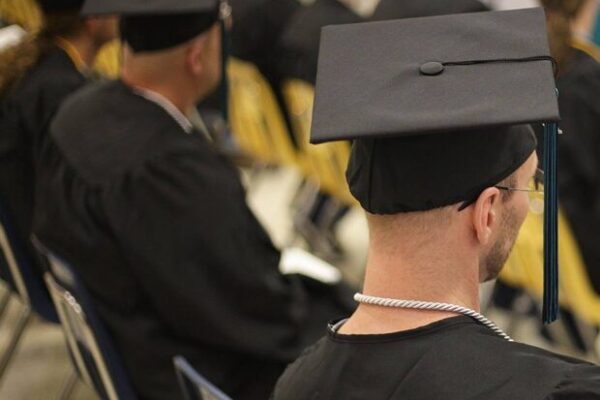Discover unexpected and innovative ways educators are using Artstor on JSTOR to enrich their curriculum.
We recently asked our community how they use Artstor on JSTOR in their teaching, especially now that the integration of multimedia resources onto one platform makes this resource even more versatile across various disciplines. The response was incredible—over 80 educators shared creative and inspiring ways they incorporate Artstor into their teaching practices. From English as a Second Language (ESL) and Theatre to Political Science and even Dance Studies, these innovative ideas highlight the unexpected crossovers that make Artstor on JSTOR a valuable tool for any subject. Scroll down to discover how educators everywhere are using high-quality images and media to enrich their students’ learning experiences. Get inspired to try something new in your own teaching!
1. ESL

“I am an ESL teacher with a love of art history, and Artstor is the perfect resource for me to show interesting images to my students to teach new language items and grammar structures!”
2. Theatre

“I haven’t used it before, but as someone who specializes in Shakespeare and other early modern dramatists, I’d probably use it to pull up image references of scenes from the plays I teach. I’d also use it as a resource for a close reading practice exercise where students are asked to make an argument about what’s going on in a piece of art by using details they pick out to support their claims.”
3. Political Science and Urban Planning

“As someone in political science and urban planning, art is so necessary to see what people were thinking about the world around them at various times in history. Artstor could serve wonderfully as a way to see and compare art from people in different periods. For urban design specifically, I’m very interested in showing my students how people depict their own cities and their dream cities!”
4. Pole Dancing

“I currently teach a pole dancing class and I actually reference Da Vinci’s “Mona Lisa” frequently as a way to teach angles (contrapposto, sfumato, etc). I would use ArtStor to access other (less well-known) images to illustrate other dance techniques!”
5. Citation 101

“One way I’d probably use artstor would be to show students how to properly cite images. I feel like a lot of the time people just copy and paste images from Google so by using artstor with the built in citations it might be easier to show them how to do it. ”
6. German Studies

“I’m in German Studies so I’d love to share artwork related to the topics we study to make lessons more creative and interesting.”
7. Dress History

“In my teaching of dress history, Images of fashion, art, and of the body are essential, and the ease of finding these images with accurate information about their dates and sources are half the battle. Artstor was an incredible resource and the hosting of this material on JSTOR will no doubt help countless students combine the visual and the written seamlessly.”
8. Social Studies

“Artstor was a great resource for finding images and artwork that I used when teaching social studies and English to my middle schoolers! It was great for finding real (not AI or manipulated) images and art that I could trust.”
9. Biology

“In my intro bio course, I use Artstor as a resource to allow students to explore science concepts through unique art pieces. This helps them appreciate that everything is interconnected and to see science in their everyday lives.”
10. Mythology

“With the range of art available on artstor I know I would be able to find almost any image needed for my presentations. Most of my favourite courses in college utilized various art pieces of whatever tale we were studying (in mythology or literature courses) or of which time period we were working through (history). I also think that examining art pieces, be it a statue or painting or something else, is a great and easy way to think like the people of the period in which it was made. ”
11. Ekphrastic Poetry

“I would use the art images to teach ekphrastic poetry.”
Ekphrastic poetry is poems written about works of art; yes, we googled it for you. 🙂
12. Dance Studies

“I would use Artstor’s catalog of performance photos to help inform discussions and recreations of choreographic and theatrical performances, combining my love for dance studies and the humanities.”
13. English

“In a couple of weeks, I will be embarking on an exciting journey as a PhD student with my very own class of undergraduate students! This presents me with the opportunity to show young scholars how a subject like English Literature can be incredibly interdisciplinary. Many students may assume literature courses only focus on the written word, but using visual media archives like Artstor to provide context and depth is an integral part to truly comprehending any text. A book is only a small fragment of the human experience and it is very important to use relevant paintings, photographs, and more to not only show how a literary work came about, but also to strengthen invaluable skills such as media literacy, comprehension of symbolism, and even empathy.”
Last, but not least…
14. History

“I have used Artstor as a student on a number of occasions, including history and art history assignments. As a teacher, I would use Artstor as a resource for research projects, teaching curatorial and visual history skills, and for contextualizing the material on the Artstor site with the help of Jstor’s collection. There are so many ways to integrate both platforms into a curriculum! From poster projects, to art references, the possibilities are endless.”
“I encouraged students to find ways to use art as a source in their history papers. Sources don’t just need to be in writing!”
15. Art

“If I were teaching a class I would use the resources in artstor to analyze how artists communicate messages within their temporal contexts. Artstor provides high quality images so that students could examine the details in an image/artwork and use the compare function to understand the differences in methods and messages between artists.”
“My #artstorteaching would be accomplished as a research and instruction librarian! Our graphic design, animation, and visual performing arts students would use this across courses. I’d be working off of their creativity, searching for what they need to accomplish their goals!”
Didn’t see your field represented in the list? We are all ears!
Tell us how Artstor on JSTOR serves your students’ needs here. If this fall is the first time you are teaching and using Artstor in your classes, let us know how it went! Even better, send us your lesson plan (like this one) to share your ideas with fellow educators around the world. Rumor has it that it’s the easiest way to snag our famous JSTOR red tote.



